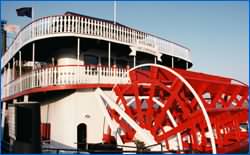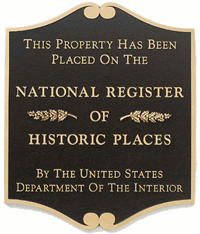|
History of Louisiana Plantations
 The great plantations of Louisiana were located along the Mississippi River on what is known as 'The River Road'. It's about 70 miles long and lines both sides of the river. In 1861 it is estimated that half of the millionaires in the United States lived along the Mississippi River on these great plantations. These sugar plantations used the rich soil supplied by the Mississippi and most were built in the Greek Revival style. Other styles of plantations were the Creole houses and even the Italianate style. A Louisiana plantation was actually more like a village as it had many houses on the property and most had big mansions for their owner. The additional buildings were for processing crops, holding crops, a building for cooking, storage buildings for equipment and animals. housing for the house servants and of course housing for the laborers known as the slave quarters. The great plantations of Louisiana were located along the Mississippi River on what is known as 'The River Road'. It's about 70 miles long and lines both sides of the river. In 1861 it is estimated that half of the millionaires in the United States lived along the Mississippi River on these great plantations. These sugar plantations used the rich soil supplied by the Mississippi and most were built in the Greek Revival style. Other styles of plantations were the Creole houses and even the Italianate style. A Louisiana plantation was actually more like a village as it had many houses on the property and most had big mansions for their owner. The additional buildings were for processing crops, holding crops, a building for cooking, storage buildings for equipment and animals. housing for the house servants and of course housing for the laborers known as the slave quarters.
Before sugar cane, these lands were used to grow indigo, tobacco, cotton and other crops. Along can an improved variety of sugar cane and many plantations changed their cash crops. As the sugarcane farmers became more successful they expanded their growth on their land including bigger homes and other buildings on their property. As their businesses thrived so did their great homes. These plantations were mostly built in the 30 years before the Civil War by the wealthy sugar planters. Their properties became self-sufficient towns of a sort with the large main house and buildings for each need including a cooking building, storage building, school, store, etc. Building materials usually came from their own properties as they cleared the land. Even bricks were made on the properties for use on the home. They grew all of their own foods, raised their own animal stocks and more.
 Most Louisiana Plantations are listed on National Register of Historic Places or as National Historic Landmarks and are located along the winding Mississippi River which was used to transport their crops. They also took advantage of the fact that the banks along the Mississippi river were rich alluvial soil created by the river itself and were excellent for growing most crops. These remaining grand homes are great reminders of our Louisiana history and heritage. Louisiana has lost many of her plantations through the years (fires, age, Civil War) but others have been restored or actually maintained through the years allowing us to see their history in the present times. Many of the Louisiana plantations are still owned by the original families and some of the properties have working sugarcane crops and more. Other plantations have been acquired and saved by organizations trying to keep Louisiana's early beginnings for generations to come to be able to experience. Most Louisiana Plantations are listed on National Register of Historic Places or as National Historic Landmarks and are located along the winding Mississippi River which was used to transport their crops. They also took advantage of the fact that the banks along the Mississippi river were rich alluvial soil created by the river itself and were excellent for growing most crops. These remaining grand homes are great reminders of our Louisiana history and heritage. Louisiana has lost many of her plantations through the years (fires, age, Civil War) but others have been restored or actually maintained through the years allowing us to see their history in the present times. Many of the Louisiana plantations are still owned by the original families and some of the properties have working sugarcane crops and more. Other plantations have been acquired and saved by organizations trying to keep Louisiana's early beginnings for generations to come to be able to experience.
The Ardoyne Plantation is one of the first post Civil War operations and is an example of how the South made the transition from slavery to the Industrial Revolution. Migrant workers of German, Italian and African decent were the main workforce of the land and would receive plantation tokens as pay. An unexpected aspect in African-American history is that free African Americans themselves owned slaves and did so at least since 1654, continuing to do so right through the Civil War.
Today there are many ways to enjoy our Louisiana Plantations including plantation tours, some are bed and breakfasts and others offer wedding venues. You can see all our Louisiana Plantations on our Plantation Tours category page. This page also includes Plantations that are offered as wedding venues.
|